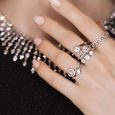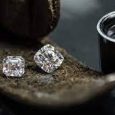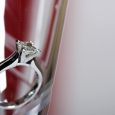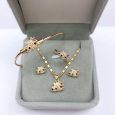When considering the pros and cons of clarity enhanced diamonds, one always wants to learn more about the differences in grading clarity enhanced diamonds v natural diamonds as well as getting an understanding of the contrast in costs for these two diamond types.
Clarity enhanced diamonds have different grading considerations than similar natural untreated diamonds. Because, we know that prior to having their clarity raised, they started out with lower clarity and so were valued less than their natural (raised) counterpart. For consumers however, they are interested in how they look now that treatment has been done to the stones.

The good news after all is that clarity enhanced diamonds look superior to their original state and have the brilliance and clarity that one always wanted to have. Also, clarity enhanced diamonds present a good value (post treatment) when contrasted to similar quality untreated diamonds. So for many shoppers, the treatment is a good option for ending up with a much bigger brighter diamond while at the same time costing less than similar looking natural diamonds. It’s all about technology for many consumers today who research well prior to investing in an all important diamond engagement ring—after all, these precious stones represent a unqiue love story, and are meant to last a lifetime, and be worn every day!
Grading and cost (pricing and comparisons) of clarity enhanced diamonds are part of a whole view of the value of enhanced diamonds. So while they are associated, they are distinctly separate diamond traits. Let’s look at them individually to see what we are talking about.
Considerations for Grading Diamonds
Grading diamonds—and that goes for any diamonds, clarity enhanced or natural untreated diamonds involves a systematic approach to examining specific universally acknowledged characteristics about the gemstone. For practical purposes, you can focus on the 4Cs of diamond quality. The 4Cs are the main characteristics of all diamonds—and the 4C system is universally understood by both consumers and members of the trade. Here are the 4Cs;
- Carat (weight)
- Cut
- Clarity
- Color.
Through communicating these traits of a diamond, an overall quality is established –and a value can be reached that everyone agrees on.
Concepts of Cost Analysis
Next, the cost of diamonds is important to both sellers and buyers. There are several established pricing grids that diamond traders use to determine the ‘going rate’ of diamonds at any given time. One of the most well-known pricing grids is put together by Rapaport Diamond Report; a trade journal which reports on global trading and market conditions. It also includes a diamond pricing chart so that retailers and dealers can trade effectively.
But when it comes to enhanced diamonds, a different pricing system has to be in effect, because there has been a change from its original status of the diamond being examined. There are several thoughts on the proper pricing of these diamonds. Obviously, vendors and merchants want to disclose the fact that enhanced diamonds have undergone treatment to make them more attractive. Disclosure is paramount to all reputable dealers and retailers when it comes to diamond marketing. Those who sell enhanced diamonds are proud of this modern diamond product and of the benefits it offers to consumers.

The main attraction for shoppers is the ability to purchase a larger brighter diamond than they ever thought possible. And of course—the pricing. With enhanced diamonds, the shopper is often astounded to discover the affordable prices that enhanced diamonds offer—it makes the dream diamond possible for those who didn’t think they could buy such an impressive engagement ring and other bridal jewelry. These facts keep the enhanced diamond niche growing stronger each year.
There are several schools of thought about pricing enhanced diamonds to establish their proper cost profile for consumers and retailers alike.
Determining Value of Clarity Enhanced Diamonds
Since there are more than one types of clarity enhancement procedures that are applied to diamonds—its understandable that each one can have a different impact on determining the value of the diamonds—it all depends on the type of treatment applied to the diamond in question.
Let’s look at the different types of enhancement processes done on diamonds; There are laser drilled diamonds which involves drilling microscopically small lasers into the areas of a diamond that have (usually dark) inclusions—otherwise called blemishes or flaws. And there are also diamonds that have been subjected to fracture filling. This refers to a clear resin solution that is forced into ‘cracks’ or natural flaws in a diamond to make them seemingly disappear to the naked eye. But of these procedures are done to improve the appearance of the stone, and raise the clarity grade as well so the stone looks much more brilliant, with a higher clarity and sparkly too! But it’s always done with full disclosure to the consumer so they are aware of the treatment and can also admire the work done to beautify their diamond.
Professionals Discuss Grading CE Diamonds
Even those in the trade who haven’t dealt with clarity enhanced diamonds very much inquire with their peers as to how to grade or appraise clarity enhanced diamonds. But one of the comments we hear from professionals relates to how the world’s most trusted diamond and gemological institute Gemological Institute of America (GIA) grades these relative newcomers to the diamond sector. It is said that GIA clarity grades CE or clarity enhanced diamonds as they would be prior to the enhancement process. But of course, when tradespeople examine the diamonds after treatment, it seems nearly impossible to know what that original state of the diamond would be without removing its enhancement. So, in a lot of ways, the diamond trade is entering new uncharted territory in trying to fix a universally accepted method of clarity grading these special stones.
After clarity grading the enhanced diamonds, how should they be priced? Some dealers tell us that they decide to value them for appraisal purposes as they would be without the clarity treatment, and then add the cost of their treatment procedures.
There are different schools of thought on this grading method, however. You will hear more seasoned professionals reject that method of valuation. A better approach according to veteran diamond dealers, would be a more straightforward method. In this case, the mindset is to price them according to current market value. Some direct research will turn up those figures. Because, wholesalers of clarity enhanced diamonds are more than willing to share that information about their prices with you. It’s in the best interest of all parties that an atmosphere of transparency is in effect. Those selling clarity enhanced diamonds and of course consumers want to better understand the market for these products and information sharing about how they are priced either at the wholesale or retail level benefits consumers and retailers alike—so the products are stabilized and can enjoy increased sales.
How the Labs Approach Grading CE Diamonds
Of course, when GIA clarity grades them as they would be without the clarity treatments, it’s understandable, because the diamonds started out in that state. But in all practicality, it’s not a doable action since after treatment one could only speculate what the diamond actually looked like without its enhancement. So, a consensus prefers the method of valuing treated diamonds according to their comparables in the marketplace. Many retailers sell CE (clarity enhanced) diamonds today so simply making a few phone calls or even conducting an online search to such merchants should produce the current values for similar clarity enhanced diamonds for sale.

A discussion concerning the difference in grading considerations with laser drilling turns up some interesting ideas. One of the means by which diamonds are enhanced is via laser drilling, which is a permanent process. It is asked, will the GIA labs grade these particular laser-drilled diamonds? And are they considered a better treated diamond, and importantly more valuable than simply the filled clarity enhanced diamond variety?
The question is intriguing, and if you ask a variety of diamond professionals from different areas of the trade, they may have different responses. Could they be considered somehow better? Not necessarily. What about more valuable, in that case? The single fact that the GIA grading labs do indeed issue diamond reports on diamonds that have been subjected to drilling is good. Even so, if you purchased a stone with an SI clarity, in actuality you may have purchased a lasered diamond that may in fact have been prior to its enhancement procedure. Nevertheless, as a consumer you are interested in what it is now—after the process, and of course the beautiful result that the treatment process created. Each diamond whether it is enhanced in some way, or if it was unenhanced will be individually examined and needs to stand or fall on its own merits.
The Final Word on Lasered Diamonds
If all other quality traits of the stone, such as carat weight, cut, and color) prove to be excellent, and should it grade as eye-clean in its clarity grade, don’t let the knowledge that your chosen stone has been laser enhanced dissuade you from selecting it with pride. Naturally, with any enhanced diamond, you should reasonably expect to acquire it at aa better price than its same quality non-enhanced counterpart. In reality, lasered diamonds are traded globally every day; and most of the consumers have done their homework on the subject. So, they have personally weighed the pros and cons of each type of diamond. There’s a sentimental preference with some people to select only diamonds that are free from any treatments. Others heartily embrace the great strides of technology today and actually prefer their diamonds to be those which have undergone treatments to make them more attractive—both in looks and price. I think it’s good to know what your preferences are, and where your leanings are ahead of shopping for these stones. Either way, they will be an important personal purchase that you can expect to enjoy for your lifetime. You can use the knowledge that there is an expectancy of a more attractive price for treated diamonds over their non-treated same quality stones. And perhaps you feel that issue is a bargaining chip. But go for the diamond that speaks to you—the one that looks like what you have always dreamt of owning—so enhanced or not, it shouldn’t hamper your purchasing decision. Sometimes your heart leads the way, especially because a diamond is often purchased to represent the love a couple shares together.
What Makes Your Decision Easier
Let’s say you are a man who’s feeling the pressure to purchase what needs to be a descent looking diamond that is out of your price range at the moment. Something like a 1-ct round brilliant diamond for under $5,000. Or even a bit larger, like a 1½-ct diamond while keeping under $8,000. In those scenarios, you should definitely give some careful consideration to what a clarity enhanced diamond offers you. Nowadays they are guaranteed for life by reputable vendors, and if all other considerations of that diamond are good, this choice will help you acquire the size and look you want, all while staying within your budget. Because clarity enhanced diamond merchants today are transparent in their dealings—meaning you understand what you are getting— you will be able to have confidence in your purchase. Added to those safety measures, are the fact that reputable clarity enhanced diamond dealers also want your complete satisfaction—you will be offered a generous return policy by the seller—so you can personally inspect the diamond in your home—on your hand to make sure this is really your forever diamond.
Speaking the Language of CE Diamonds
While treatment methods have been developed decades ago, and continue to evolve, there remains a tremendous amount of confusion about certain of these enhancement treatments applied to diamonds to make them look more beautiful.
For starters, the clarity issue, or purity—meaning lack or presence of blemishes of a diamond — the relative number and type of flaws within a diamond — has, in tandem with the other 4Cs (cut, color, clarity, carat) a heavy weight on evaluation of a diamond’s worth. The more prevalent blemishes, also called inclusions, appearing in diamonds are actually called feathers (naturally occurring fractures called feathers because of their feathery opaque-like appearance), and solid natural foreign minerals within the stone. Mineral crystals like diopside, garnet, dark carbon or even other diamond crystals invade a diamond crystal in its formative stage. The size, tint, and even location of these naturally occurring blemishes usually reduce the value of a diamond, especially when other diamond characteristics are desirable. Of course, to jewelry professionals who trade in diamonds regularly, there are ways to minimize the visual impression of these flaws through a wide range of treatment methods. To clarify both the processes and their impact on a stone’s value, we’ll put focus on the two most often utilized forms of enhancements, which are; fracture filling and laser drilling. Since there is a marked difference between these two methods of improving the clarity and appeal of diamonds, we’ll spotlight both separately. Then you can be the judge as to what procedures appeal to you as a buyer, and which one is your preferred diamond product should you chose to purchase any kind of treated diamond.
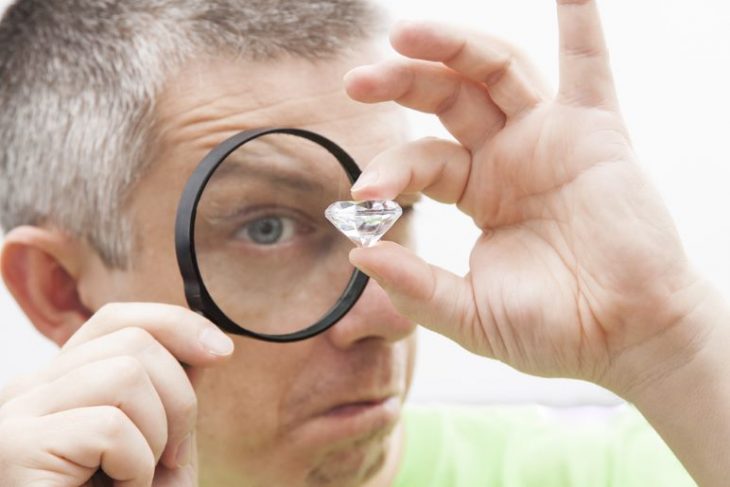
Laser Drilling Examined
The development of laser drilling techniques has been in place for a couple of decades now. It was their ability to successfully create microscopic laser holes that lead to their success as an important method of diamond enhancement. Keep in mind these are naturally earth mined diamonds to start with. So even with a beautification process, they are still from the earth, with is important to many diamond collectors. The effective laser enhancements have enabled both diamond manufacturers and diamond polishers to selectively target unattractive characteristics in a stone and make a determination to either remove it / them altogether, or significantly reduce the appearance of the light reducing inclusion the crystal which impedes the light performance in a stone.
Diamonds have been subjected to this laser-drilled method from at least the mid-1980s. In most instances, it has been utilized to lighten a dark-toned carbon inclusion which features prominently in the diamond itself, especially when it is apparent to the un-aided eye. Since the development of this laser technique has become so successful, and even up to recently, laser drilling procedures have been widely accepted as a vital part of mass diamond manufacturing processes. Until we find something better to replace this effective process, it will continue being used today on diamonds that have other good qualities and will make a beautiful piece of jewelry. Just because a diamond has a lowered clarity grade than what is desirable, it does not necessarily mean that it’s other components of the 4Cs are nor in place. So, it’s a reasonable solution to subject these valuable gemstones to a beautification process which not only increases their attractiveness, and salability, but allows them to come onto the market at a much more attractive price point than their similar looking non-enhanced diamonds. And that’s always a plus in today’s market.
The Drilling Process
The drilling process is interesting for men and women alike. Many people are fascinated with these high-tech procedures that impact the diamond trade. This process involves the use of infrared laser beams which are specifically directed exactly at the flaw that is to be removed. Since the laser beams can drill micro-mini lines that require magnification to see, their work is extremely accurate—and does not impact the diamond area around the flaw. It bores very fine holes, or laser drilled hollow tubes, into the stone, which in turn creates a route of access directly to the targeted inclusion.
Once the included area in the crystal has been reached by the laser drill and completely ‘cleaned out’, that diamond is then immersed in a sulfuric acid bath. The acid effectively travels down into and along tube to further dissolve any remaining carbon inclusions, iron oxide-staining and other unwanted blemishes.
Every diamond is a completely distinctive natural stone. And that also means any inclusions (or flaws) located inside the stone. That originality is one of the facts that makes each diamond a true one of a kind treasure. Did you know, that the inclusions we speak about are also one of the ways that gemologists can identify the diamond as a genuine earth-mined stone? It’s true—scientists look for identifying characteristics that appear inside these natural wonders. Using laser drilling, several inclusions (in number and also by type) can be efficiently removed from the same stone. When placed under microscopic examination, the finely drilled ‘bore-holes’ are readily identifiable. These laser-drilled spaces are most often observed when the diamond is viewed from the side or bottom of the stone. Face-up, or the way you normally view a diamond either loose or in its mounting, any laser drilled marks usually disappear. It’s one of the benefits of this type of enhancement—the goal is to make these processes recede into the background so all you see is the beautiful scintillating stone.
Unlike the process of fracture-filling described earlier, a laser drilled hole is actually considered by the GIA (Gemological Institute of America) grading laboratory to be an internal inclusion on the stone and as such is indicated on their diamond reports—in the same manner as other inclusions like clouds, pinpoints, feathers, or crystals. The reason for this determination is because the laser-drilling procedure is a permanent process—and that makes all the difference in this laboratory. The following direct quotation appears on GIA’s website regarding the types of diamonds for which GIA labs issues grading reports:
GIA Diamond Grading Reports are not issued for synthetics, simulants, mounted diamonds or those that have undergone unstable treatments, such as fracture filling or coating. And while reports may be issued for diamonds that have been laser drilled or HPHT processed, these stable treatments are prominently disclosed on the report.
A laser drilled diamond which is given a grading certificate will have that drilling indicated as one of its inclusions. It is not valued as highly as a natural diamond of the same grade which has not been laser drilled.
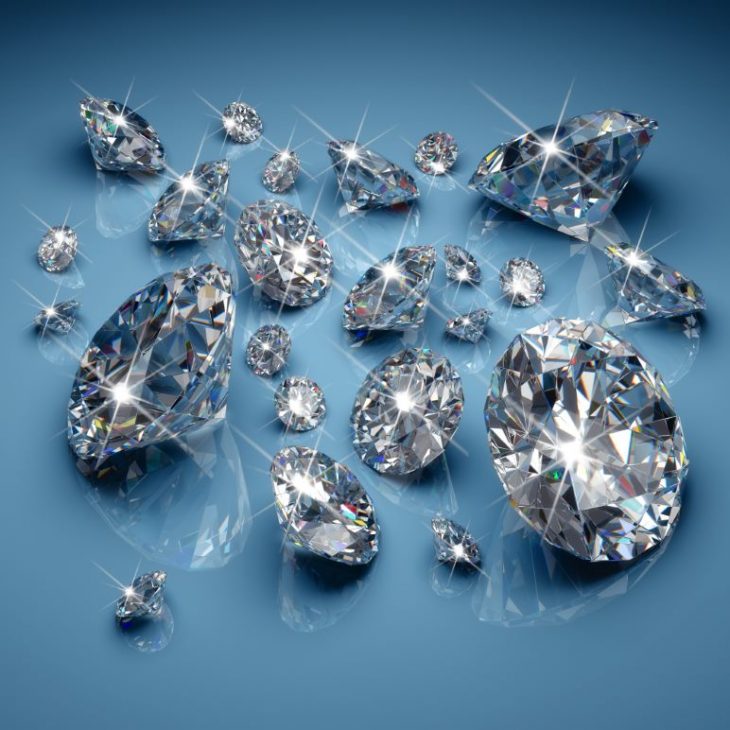
Let’s Look at Fracture Filling
The fracture-filling process of diamonds is often a less understood treatment within the industry — and that refers to both retailers and the public as well. This is specifically due to its nature as a treated stone requiring a bit more attention to its care. There are several ways of treating diamonds, and all of these various diamonds are being referred to as Clarity Enhanced or CE Diamonds which can give you, the consumer, the illusion that this type of diamond is actually better than diamonds which are not clarity enhanced—but what consumers should really appreciate is the fact that technology brings a beautification process to quality diamonds that are only lacking in the clarity area. When they’ve been treated, they offer consumers a wider choice of diamond prices and at more attractive prices than they ever thought possible. So in the end, the shopper can discover in a treated diamond—one that is larger, brighter and more sparkly than they thought they could afford—all while keeping well inside their budget.
How FF (Fracture Filling) Is Accomplished
This unique process involves filling in any fractures found in the stone. In this way, the fractures seemingly disappear to the naked eye. Any number of large, dark fractures, and those that are referred to as having multiple feathers get a treatment of a glass-like resin material which camouflages the appearance of the fractures throughout the stone. This resulting effect in the treated diamond is that of having a new higher clarity grade than it would have appeared prior to the treatment. In fact, most diamonds which are sourced for the purpose of fracture filling process may actually be fine quality stones in their other characteristics like—cut—color-carat weight. The area that they fall short in is with their clarity grade. The diamonds’ clarity is always a key attribute since it refers to how ‘clear’ the stone is and how light will be able to pass through without any inclusions to cloud the stone’s brilliance. That’s why consumers are pleased to see any number of treatment procedures done to a diamond which will raise its clarity grade and present a clearer, cleaner brighter stone to the unaided eye.
Because the filling glass melts at such a low temperature, it easily “sweats” out of a diamond under the heat of a jeweler’s torch; thus, routine jewelry repair can lead to a complete degradation of clarity or in some cases shattering, especially if the jeweler is not aware of the treatment. Similarly, a fracture-filled diamond placed in an ultrasonic cleaner may not survive intact.
The glass-like material (a colorless resin product) present in fracture-filled diamonds can usually be detected by a knowledgeable jeweler gemologist when observing it under the microscope. And that’s a good thing. Because you want to buy a treated stone with knowledge and confidence in the product. No reputable vendor would sell a treated diamond without disclosure because they are proud of the product they sell and want the consumer to fully understand what they are buying.
When professionals look at the treated diamond under magnification (at least 10X and up) the most easily recognizable signs of treatment include air bubbles and flow lines within the glass filling, which are traits that never occur in untreated diamonds of course. An interesting observation, and a dramatic one also is the appearance of a stunningly beautiful so-called flash effect of bright flashes of color reflecting from the stone (usually a side view) when the fracture-filled stone is rotated or rocked back and forth to capture the light. These flashes are produced in colors ranging from purple to an electric blue or even shades of orange or yellow, depending on lighting sources used for viewing. Indeed, in certain instances a diamond may change a color grade after fracture-filling—but this is highly individual and different for each stone, depending on its carat size and the particular shape of the stone. Because of this, fracture-filling is more often applied to diamonds whose size is large enough to warrant this high-tech specialized treatment. We have seen some diamonds on the market however, as small as 0.02 carats have received the fracture-filling treatment. But as a consumer, you are most likely looking for a center diamond for your engagement ring, so in your case this information is not needed. Today, the fracture filled diamond niche is enjoying broadened popularity and you’ll see all kinds of jewelry items created with fracture filled diamonds. The attractive pricing makes it the stone to have for everything from earrings, to bridal jewelry to even tennis bracelets.

It’s good to know that while most well-known gem laboratories, like the influential GIA grading lab, have a policy of not issuing diamond reports for fracture-filled diamond products. However, there certainly are other established gem labs that do certify these diamonds so it is important to learn about your fracture filled diamond and discover what lab is issuing the certificate on your particular diamond. It’s becoming common practice for vendors of treated diamonds-both laser drilled and fracture filled to submit their diamonds to a gemological laboratory prior to offering their stones for sale. That way, the consumer purchases the diamond and understands that it already comes with a grading report from an independent laboratory. That’s an added value benefit that consumers welcome and aids in establishing confidence in the diamonds’ quality.
For the informed shopper who has taken the time to do due-diligence prior to purchasing their diamond, they understand the pros and cons of all diamond types. So, when they invest in the diamond of their dreams, they know what they are getting—including the stone’s benefits and any special care that is mandated to make sure their stone stays as beautiful years from now as the day they purchased it. The real treat for budget minded shoppers—and who isn’t today—is that you can expect to pay much less for your fracture-filled diamonds with an appealing higher clarity grade after treatment. Who doesn’t want to save money today? We all need to exercise wisdom with our purchases—especially those that are big ticket items and meant to last a lifetime. The romantic idea of buying-blind and just selecting the first one that catches your eye—or thinking that the higher priced diamond shows you love her more—is a thing of the past. Now couples shop together so the lady gets exactly what she wants. After all, this is something that is meant to be worn every day of her life. So, keeping a budget in check shows wisdom and foresight in spending on this important ring.
This Choice is Yours
Disclosure is key to understanding what you’re buying and appreciating your purchase. In the United States, we adhere to several regulatory commissions that govern how diamonds and gemstones are traded and how their product description protects consumers. For example, the World Federation of Diamond Bourses and other governmental boards like the US Federal Trade Commission explicitly mandate the disclosure of most diamond treatments in writing at the time of purchase. Some of these diamond and gemstone treatments, particularly those which affect a stone’s clarity, remain a topic of discussion within the industry. This is certainly the result of traditional thinking that diamonds possess an exclusive or even revered place amongst gemstones and as such must be treated with great caution and reserve.
While, as noted above, there is a distinct difference between laser-drilled diamonds and fracture-filled diamonds, our recommendation is to stay away from diamonds with either type of treatment. I say this with regard to laser-drilled diamonds not because I place them in the same category as fracture-filled diamonds. I don’t. But because in today’s market a laser-drilled diamond is a very difficult diamond to sell or trade-up for a better diamond and you are better off buying a better quality, smaller diamond, than a larger one which has been laser-drilled.
Modifying the Essence of a Diamond
We’ve learned that treatments can and do improve a diamond’s color or clarity, however the presence of such enhancements may also have an impact on the stone’s value – especially where the price now reflects its appearance post-treatment. Consumers have an expectation that they will have the right to know for sure if their stone is an untreated natural, a diamond simulant or a created lab-grown diamond, as well as learning if the stone has been subjected to treatment to enhance its appearance in any way.
A Note about Color Enhancement
While many diamonds today for sale have no color enhancement procedures placed on them, it’s still not unheard of. Therefore, GIA grading labs do routinely test each diamond coming into its lab for evidence of color treatment present.
Coating is one method to modify a diamond’s color by masking any undesirable body color present in the stone with an ultra-thin layer of chemicals or plastic-like surface coating. Another manner of diamond coating to change its color involves the application of a micro-thin film of synthetic diamond to the surface of a diamond simulant; this provides it with certain characteristics of a real earth mined diamond.
HPHT—a well-known process—is an acronym for a high-pressure, high-temperature. This process is an effective tool for altering the color of certain diamonds. This procedure can turn ‘off’ color diamonds into colorless stones; but it also is utilized in creating a colorful array of diamonds like yellowish green, green, pink, blue, or yellow. The colors are often more vibrant than their natural counterpart—still detection is key to discovering if they are indeed treated for their color. Absent a highly technologically equipped grading laboratory, these methods of treatment can be nearly virtually undetectable—even though the person suspects their treatment. GIA does issue grading reports for diamonds that have been HPHT processed; clearly disclosing the presence of treatments on their report. As a further precaution for both consumer protection and for merchants too, GIA places laser-inscriptions on the girdles of those diamonds it identifies to be color treated.
The Value of a Diamond Grading Report in Determining Diamond Treatment?
GIA will clearly state its discovery of color treatment on diamonds. They also will clarity grade diamonds that have been previously laser drilled to improve their appearance—as this is considered a permanent process. They do not grade fracture filled diamonds. However other reputable laboratories will conduct grading on fracture filled diamonds. Also, today, reputable diamond vendors routinely submit their fracture filled diamonds to an independent grading laboratory for a diamond certificate. That way, when a consumer buys the diamond, it already has the added value benefit of having its report issued. This is very helpful when you want to have your diamond jewelry insured against loss or damage. Many insurance companies require detailed documents including grading reports and appraisals to write the additional jewelry rider to your homeowner’s policy.
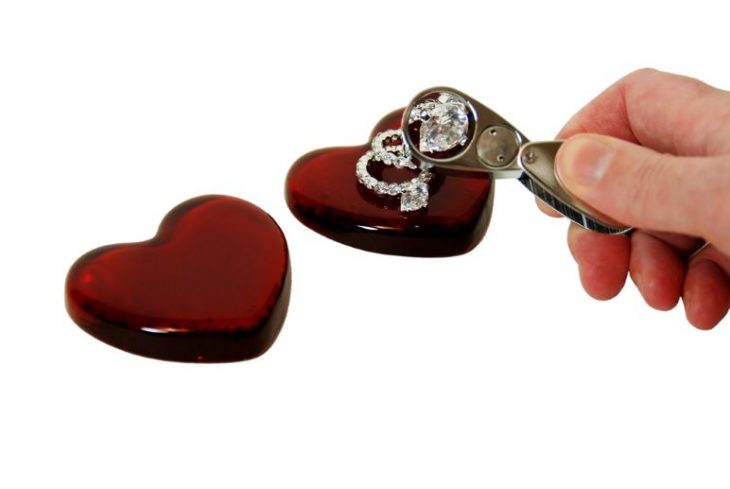
The Overview about CE Diamonds
Think about diamonds in general. Most diamonds mined anywhere in the world today are what we call industrial grade diamonds. They have the characteristics that make them best suited for industrial application—but not for jewelry. The smaller group of diamonds recovered via any mining methods are those destined to become jewelry. Of that small group, almost none of these crystals are without some naturally occurring flaws. That’s why the clarity enhancement technology was developed in the first place. There were many diamonds with otherwise fine quality traits—those with good carat weight, color, and even good cuts. The only thing lacking in their 4Cs was the clarity. With advances in technology and a clearer understanding of the diamond itself, the methods of clarity improvement were developed to respond to that call. Each enhancement process seeks to optimize that diamond’s beauty by improving the diamond’s clarity. And most importantly–these methods are only applied to natural earth-mined diamonds.
99.99% from the diamonds in the world have inclusions and the diamond cutting process from rough to polish make some of the inclusions more visible to the naked-eye. These visible inclusions will affect on the clarity grade, the fire and the brilliance of the diamond. The clarity enhancement process simply come to make some inclusions less visible to the naked-eye and by that it add more fire and brilliance to the diamond so the diamond look much better than before. The inclusion is still in the diamond, it just more difficult to see it.
How the Cost of Enhanced Diamonds Benefit Consumers
Because any diamond you are considering to buy is a distinct naturally created masterpiece, within it are the natural imperfections (also called inclusions) that give the diamond its unique identification. One of the more commonly discovered imperfections are those called feathers. These are small white or light toned feather-like fractures in the crystal caused by the enormous internal stress the diamond endured while it was growing underground. Now, feathers do lower the actual stone’s clarity (by interfering with light as it passes through the crystal) it also negatively impacts the brilliance of that diamond. Yet, they pose no risk to the integrity of the diamond. That’s a good thing for consumers who want to balance the attractive lower price of enhanced diamonds against the stability of the stone they want to purchase. This is especially true with diamonds meant for placement in bridal jewelry. These types of jewelry will be worn every day for the rest of the woman’s life and need to be suited for every day wear. Now that you know the price advantage of enhanced diamonds, their procedures for improving their looks, and the stability that they afford—you have all the knowledge you need to make an informed choice on what diamond is right for you. No one can really tell you that—this is a highly personal decision. But knowing the value and quality of clarity enhanced diamonds, whether they are HPHT, fracture filled, or even laser drilled—you now have the facts to make a wise decision and select the diamond of your dreams. And if your choice is clarity enhanced diamonds over un-treated stones, you’ll be glad you can get the biggest, brightest, cleanest diamond you always dreamed about—and at a price to make you smile.
Attractive Pricing for Today’s Shopper
Obviously every diamond merchant sets their own product pricing, but clarity enhanced diamonds represent the kind of value that today’s shoppers are looking for. These beautiful diamond products are always less expensive than their non-enhanced diamond counterparts. This gives the consumer the option of acquiring a substantially larger diamond within a preset budget and yet without sacrificing quality. That seems like a win-win solution that every smart shopper wants to have.

